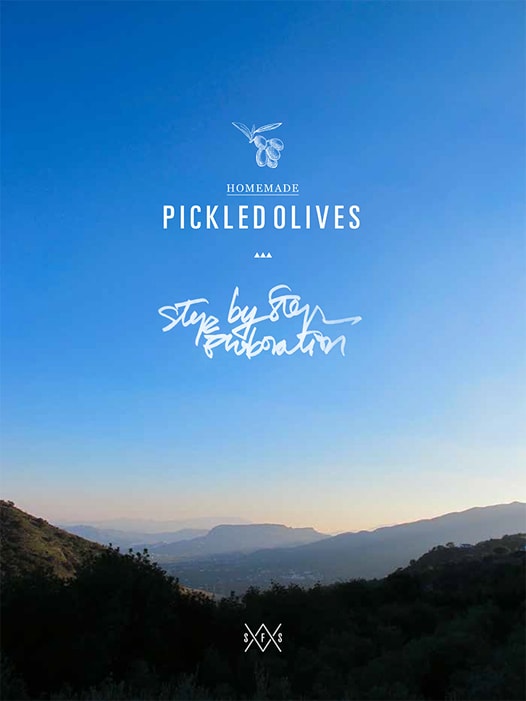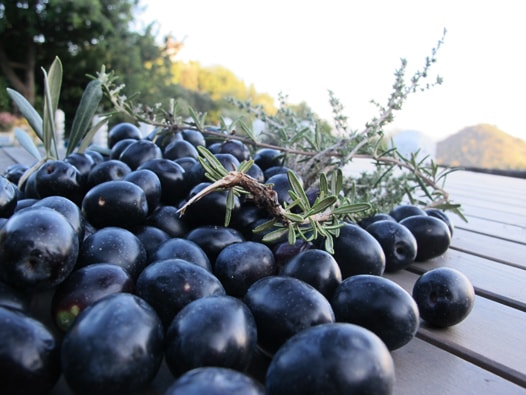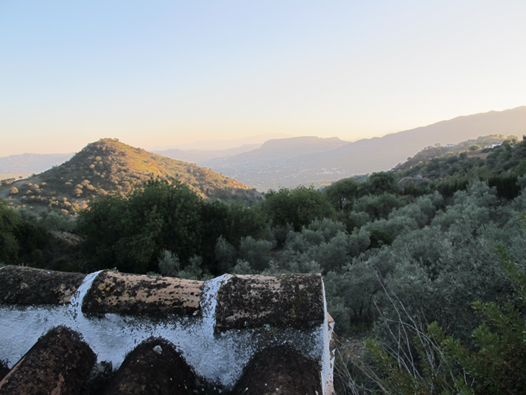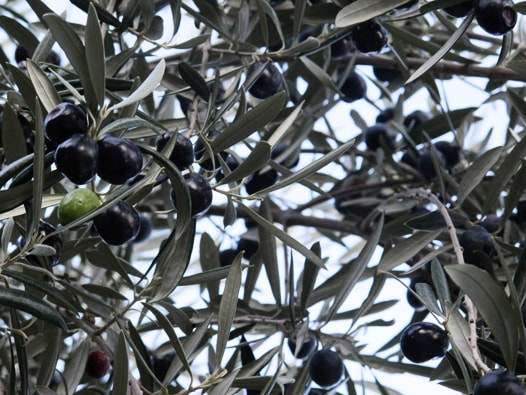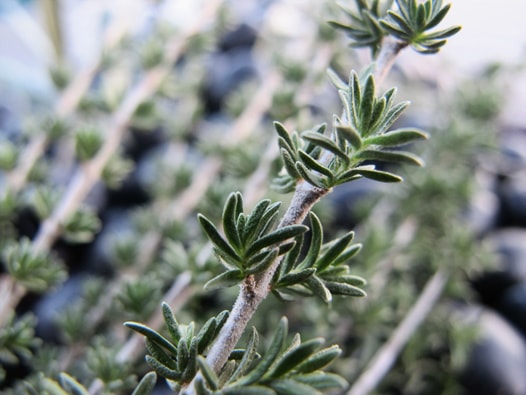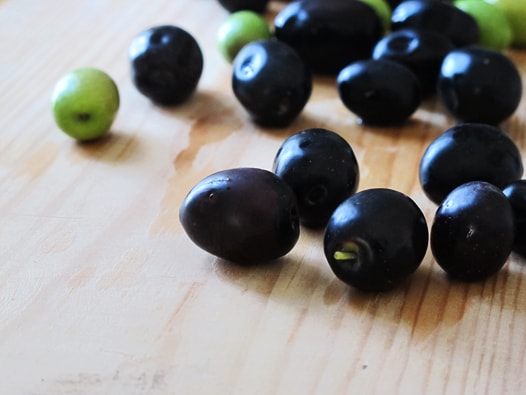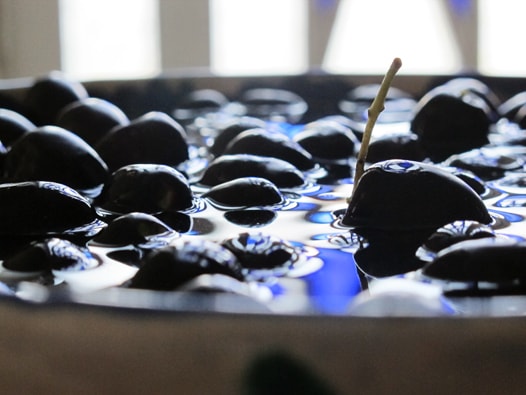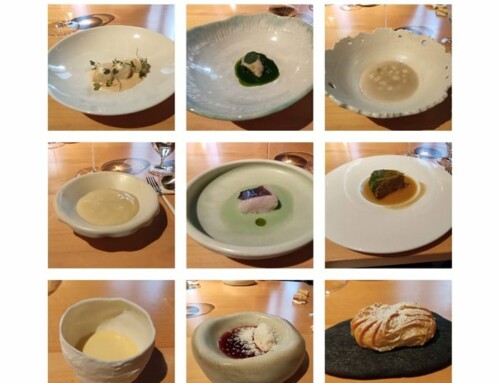We believe that this the perfect moment to present you the step by step elaboration of Andalusian style marinated olives. In November the team of Spain Food Sherpas went to Alora and the Guadalhorce Valley, to enjoy again the spectacular landscape full of citrus fruits and olive crops, dominated by the Guadalhorce River.
We used this opportunity to collect green and black olives that are already completely ripe.
In this post we share with you step by step how to marinate Spanish olives the “andalusian way”. As you may know, Spain produces about half the world’s total olive oil and Andalusia represents 75% of that production, so the vast majority of the olives consumed in Spain are , in fact, andalusian style marinated olives.
Marinating olives is not too complicated but yes, it can take several weeks. Our proposal is that the elaboration and preparation is completely artisanal and organic.
How to prepare Spanish marinated olives in a nutshell
The process consists of two phases: to sweeten and to marinate.
Phase I-To sweeten:
- We started picking olives right from the tree.
- We washed them to remove impurities and we made cuts around them (in case we have decided to do so- if not, we left them as a whole).
- Then we put them for 10 days in a clay pot, changing the water every day in order to reduce their bitterness.
- Finally, to cure them and to store them longer, we immersed the olives in brine during various days and once they have lost the bitterness.
Phase II- To marinate:
- We used citrus fruits like lemon and orange; garlic and spices we collected- thyme, rosemary, fennel and oregano. But there is a long list of products that could be used for seasoning: bay leaf, onion, red pepper, paprika, cumin, vinegar, mint, clove, etc. Just be creative!
- The olives are stored in glass or clay jars
- The olives and the seasoning must be placed in layers, alternating them and always ending with the dressing.
- Fill the container completely water and add a little more of salt.
- Pour a little bit of extra virgin olive oil on it.
- Taste them every 5-7 days until the olives have taken the falvour of the ingredients.
In this first part of our 2-parts article we’ll delve deeper into the first phase. Keep reading!
Olive Variety
We will be using for this post the aloreña olive. The aloreña olive is a local variety from Malaga and due to its characteristics it is perfect for pickling and to elaborate table olives. They are known for their “floating pit” that separates easily from the pulp, the great pulp-pit proportion and its porous texture perfect to absorb the dressing.
The manzanilla and gordal varieties are also very commonly used to prepare table olives. But don’t worry if you don’t have any of these! you can use almost any olive variety.
Ways to prepare them
First of all you must know that we can prepare them in three different ways: enteras (whole), rajadas (cut) or machacadas (cracked open). And we can use black or green olives.
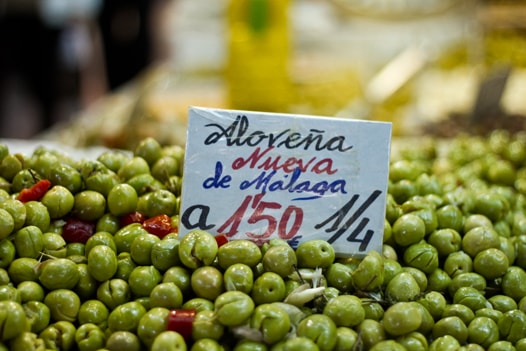
Cracked Open Marinated Olives- Malaga Atarazanas Market
In our case, we will make the black olives as a whole, so we can keep them longer. Moreover, since they are ripe, they are less bitter and need less preparation time.
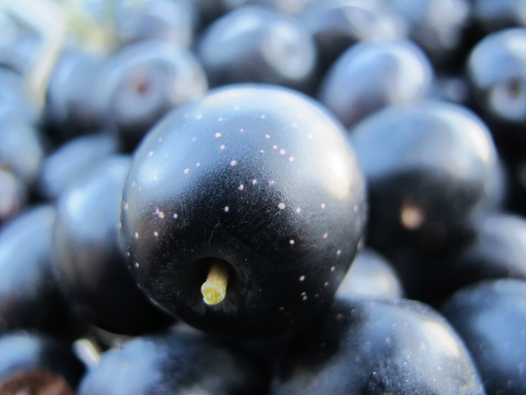
On the other hand, we will cut the green ones. To do so, we will cut two or three longitudinal slits in each olive. You can use a knife, but if they are very many, our recommendation is to use a special wooden table to cut them. These ones we’ll need to eat in less time, but they’ll absorb the nuances and flavors of the dressing with more intensity.
After these ten days, we will put the olives again in water, but this time salty water. Our recommendation is that you boil enough water to cover these olives, mixed with the appropriate amount of salt (one cup of salt/ 4 liters of water) until it dissolves.
Traditionally, in order to know if the brine contained enough salt, a raw egg was introduced in the salt water and if it floated, the proportion was correct.
The olives need to be in the brine for a couple of days. You should change the water every two or three days, but you don’t need to do it on a daily basis anymore. You will know when they are ready, tasting from time to time the greenest ones from the bowl and like this confirm that they have lost their bitterness.
Softening the bitterness
Secondly, to ensure that the olives are fit for consumption, we have to remove or at least soften their bitterness. First, we wash them to remove the excess of dirt and possible impurities.
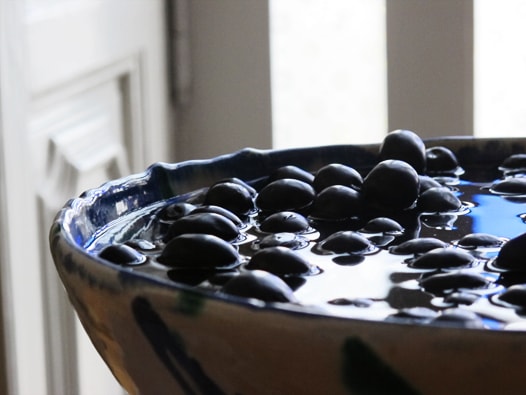
Then we will place the olives in a bowl of glazed clay and fill it with cold water until covered completely. We must change the water daily for ten days. In our case, we will put in one bowl the whole black olives and in another one the cut green olives.
Brining the Olives
After these ten days, we will put the olives again in water, but this time salty water. Our recommendation is that you boil enough water to cover these olives, mixed with the appropriate amount of salt (one cup of salt/ 4 liters of water) until it dissolves.
Tip: Did you know that traditionally, in order to know if the brine contained enough salt, a raw egg was introduced in the salt water and if it floated, the proportion was correct.
The olives need to be in the brine for a couple of days. You should change the water every two or three days, but you don’t need to do it on a daily basis anymore.
You will know when they are ready, tasting from time to time the greenest ones from the bowl and like this confirm that they have lost their bitterness.
Don’t forget to share this post!
Related Articles
↓
Sign up for our Newsletter and get the inside scoop on our favorite recipes,
exploring and devouring Spain and more.
